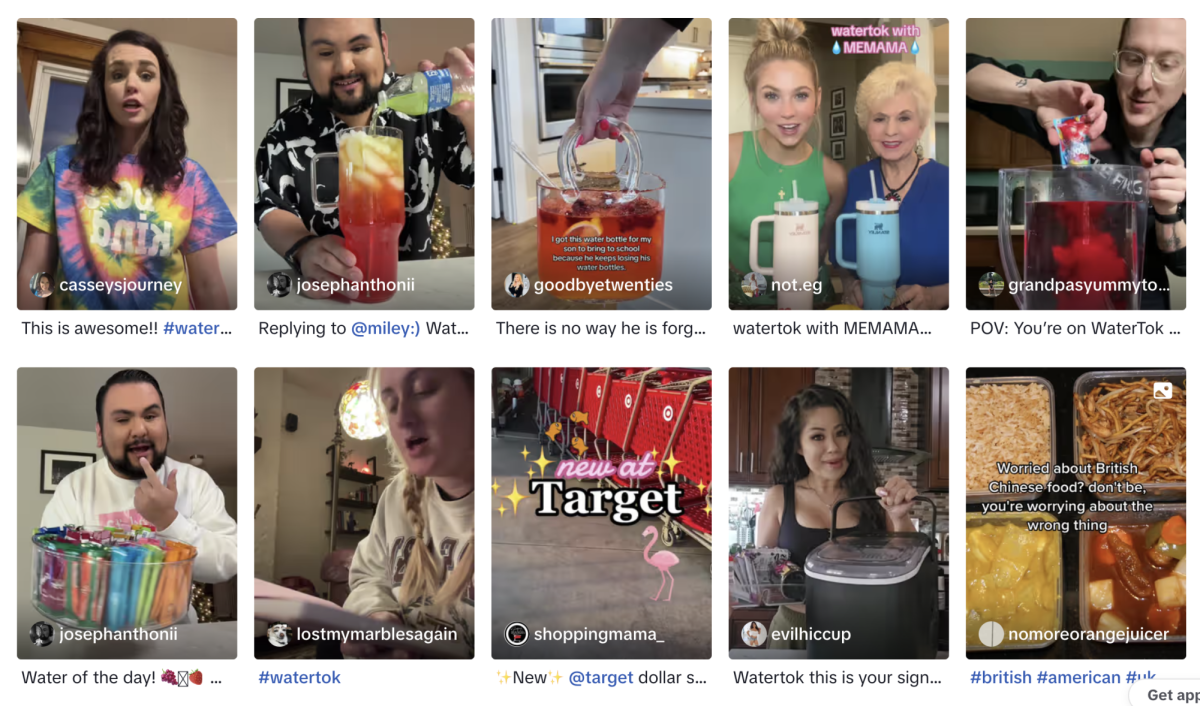New meme formats – along with microtrends, political ideologies and “Drunk Elephant” products (not meant for, but essentially marketed towards eleven year olds) – hit the internet on the daily. With TikTok, Instagram and X, users are provided with an endless stream of inspirational Alpha male, get-ready-with-me, life vignettes, satirical memes and news snippets at the tap of a screen. Every day, something new is funny.
And a couple months ago, the newest ongoing meme format emerged. Its outline: first, a stereotypically “American” photo (notably, a Taco Bell in the middle of a beautiful landscape; the Bass Pro Shop Pyramid in Vegas or the I-80, I-580, I-880 highway interchange in Oakland, California – but any sort of fast-food concoction works); next, the caption, “The European mind can’t comprehend this” (capitalization and contraction use vary).
And it’s funny. It pokes fun at Europeans’ dishing on Americans for every move they make at the same time that it satirizes American hyper-consumerist and individualist culture. And a lot of times, though maybe I shouldn’t, my American mind can comprehend it: I love a McDonald’s limited time meal, and though I dish on car-centric urban design, I’ve many a time merrily traveled hours along the I-35, and even taken the Chisholm Trail Tollway home, though it only reduces my travel time by a cool three minutes.
Except, the other day, while perusing Instagram reels, I came across a niche that even this American mind struggled to understand: a group of “content creators” (I hate this term, but am using it for the lack of a better one) with an unwavering refusal to drink water unless garnished with one to three packs of candy-flavored additive and one to two pumps of sweetening syrup. It fascinated me. Why? What does this come from? What is the fuss – why has it garnered attention? Does this matter, should I care?
1: The Origin
Pretty simple. Water flavors gain popularity, and help people drink more water on the daily. All good there.
2: The fuss: Stanley Cups, Cherry-unicorn-flavored Water, and Diet Culture
People are mystified by this trend for two main reasons: the obsession with what water bottle it’s in, and the actual add-ins to the water.
Though all these influencers spend their time making and drinking different water-concoctions, they have a commonality: they all use Stanley Cups as their drink vessel of choice. A Stanley Cup will run about $45 for a 40 oz cup regularly, but lately, the fans have been going crazy: Stanley released a collaboration with Starbucks which was exclusively available at Target, and the people fought. They camped out at 4 a.m. to be the first in line, ran into the store as soon as they opened, and then wrestled in the aisles for a chance to grab a cup. Now, they resell for upwards of $200-300.
So, what? Did the cups have a limited edition feature? Did they have a stereo? Change colors? Refill themselves? Purify the water? Include a smart screen?

No. The cups were pink. Stanley already has pink cups.
The Stanley cup mania, considering that they aren’t anything other than a regular reusable cup (key word: reusable – buying several on a whim defeats the purpose a little) is a key example of the speeding-up of the trend cycle because of internet influencers; regular people’s, namely suburban moms’, tussles in the Target aisles is directly representative of everyday people’s struggle and chase after keeping up with the new “it-item.” Both the New Yorker and The Cut have made excellent articles dissecting the Stanley Cup phenomenon.
That’s one part of it. The flavored-water trend would not have been nearly as often labeled as insane if it weren’t for the social media rage around the Stanleys. The entire water-trend is pretty much just a stackup of trend on trend on trend on trend; and that’s why it has garnered attention.
2.5: A Random Bone to Pick
And then the other half: the flavored powders and syrups that go into the water. The powders are just like kool aid, though. The star of the show – and the controversy – are the syrups, which seem several steps further away from any lemonade powder mix simply because of the viscosity change from water. To most people, syrup belongs as a garnish in shakes or ice cream, not a key ingredient for water.
I don’t think this is repulsive or wrong – what right would I have to judge? I love soda and sweet treats, and certainly am not the healthiest person on campus. But I have a bone to pick. Not with the consumers, but with the brands which sell these syrups. Namely, “Skinny Mixes.” My issue lies within the name.
Diet culture is a part of every American’s life: little girls are often told to watch their size, magazines sell the (many times unhealthy) promise of weight loss to already-healthy people of all ages, and diabetes drugs are on recall because of the celebrity popularization of ozempic as a weight-loss solution. Point is, the unnecessary marketing of syrup as “skinny” (also correlating thinness to health) isn’t just harmful, it’s silly. Since vibrant blue “mermaid syrup” clearly is not a pinnacle of health, the inclusion of “skinny” in the name only serves to support the idea that skinny = good and should be sought by all, and that anything other than skinny = bad.
Other than the obvious fallacies within the marketing of the TikTok water, there’s nothing really wrong with it: it’s popular because it’s appealing and yummy and fun; easy as that. Thus, instead of Instagram reels users shaming people posting on the internet to share their lives, if they have an issue with the water, they should place a blame on the corporations which have lead to the unhealthy and eccentric components of American food culture which led to the popularization of the skittles-unicorn-sugar-flavored-water in the first place.
Conclusion:
The Skittles water trend is really just an adult extension of kool-aid and easy-mix lemonades from childhood. And while it may not be the healthiest, or “comprehensible to the European mind,” it doesn’t warrant the hate it gets. It’s simply people playing into the trends around them – Stanley cups and TikToks – finding fun in little things. So while I may never drink the syrupy concoctions, if it helps people drink more water, so be it.





